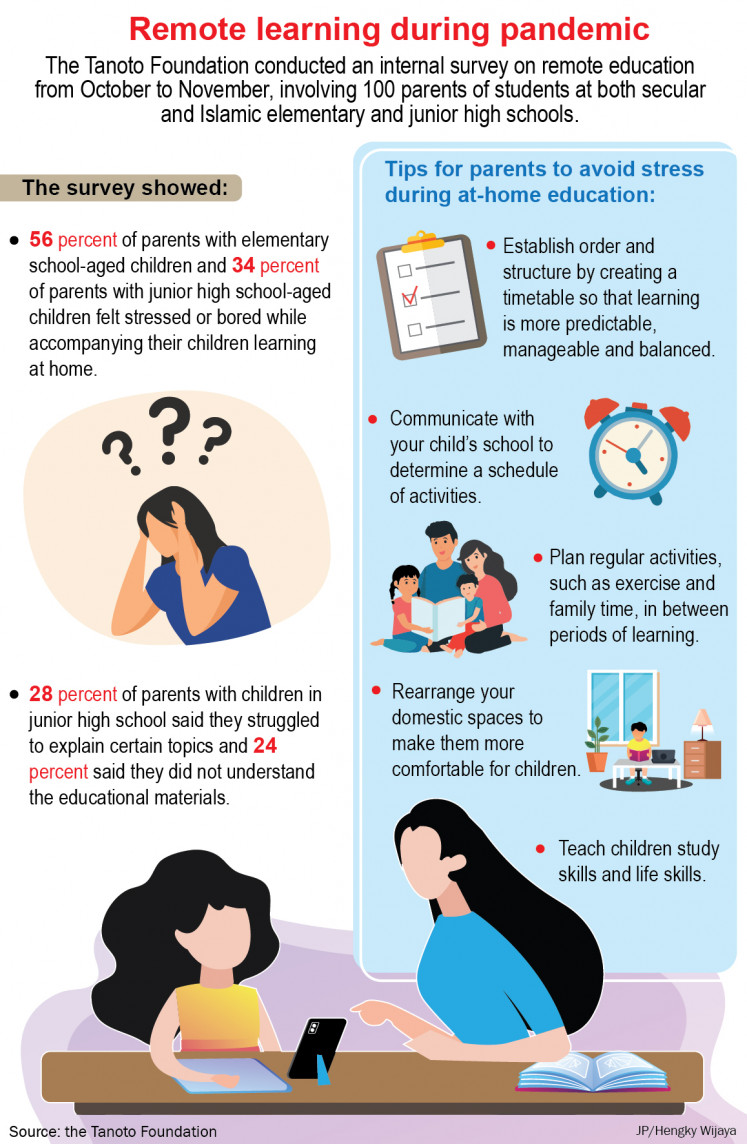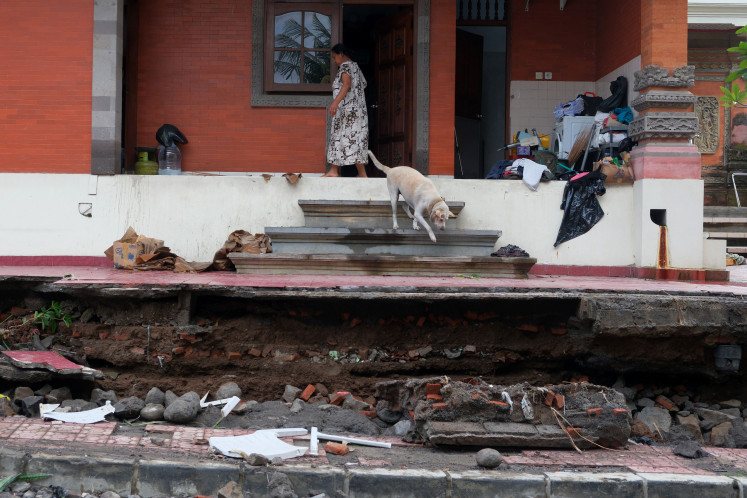Popular Reads
Top Results
Can't find what you're looking for?
View all search resultsPopular Reads
Top Results
Can't find what you're looking for?
View all search resultsHow kids, parents can manage at-home learning
Experts at a webinar have offered some advice to parents on how they can navigate the uncharted waters of at-home learning.
Change text size
Gift Premium Articles
to Anyone
T
he COVID-19 pandemic has disrupted education and forced both parents and students to adapt to remote learning. While at-home learning is still considered the best and safest method for children during the pandemic, it also creates additional stress for parents.
An internal survey by the Tanoto Foundation, a family-oriented educational philanthropy, found that 56 percent of parents with elementary school-aged children and 34 percent of parents with junior high school-aged children felt stress and bored while accompanying the children learning at home.
Among parents with children in junior high, 28 percent said they found it challenging to explain certain subjects and 24 percent said they did not understand the learning materials.
In response to these issues, family counselor Chyntia Poedjokerto at the Wellness Indonesia Counseling and Education Center shared tips on how parents could manage their stress during at-home learning.
First and foremost, Chyntia suggested parents to establish order and structure by creating a timetable so at-home learning activities were more predictable, manageable and balanced.
“School and home have different natures. School has a more structured and predictable [environment],” she said during a Tanoto Foundation webinar on Thursday. Scheduling and order were crucial, she stressed, since children had no option but to learn at home.
An internal survey by the Tanoto Foundation, a family-oriented educational philanthropy, found that 56 percent of parents with elementary school-aged children and 34 percent of parents with junior high school-aged children felt stress and bored while accompanying the children learning at home. (JP/Hengky Wijaya)Chyntia recommended that parents speak with the school when drawing up a schedule of activities, and take look at which activities children could do on their own, and which ones needed supervision. Parents should also schedule regular activities, such as exercising and family time, in between the learning activities.
Another way to support at-home learning was for parents to rearrange their home setting and make it more comfortable for children.
Chyntia also encouraged parents to teach their children study skills as well as life skills.
Study skills include understanding and summarizing a subject and how to stay focused, while life skills are those skills used in everyday activities, like making breakfast and washing the dishes.
“Parents will feel less stressed when their children are more independent,” she said.
Finally, Chyntia recommends that parents communicate their expectations clearly to their children.
Also during the webinar, Sekolah Cikal academic director Tari Sandojo said it was important that parents understood their role in at-home learning. “We have to understand that parents are their children’s learning companions,” she said, underlining that parents should not attempt to fill the role of a trained teacher.
Tari acknowledged, however, that every family was different, so parents should communicate and collaborate with their children’s school.
Meanwhile, parents could try and identify their children’s natural intelligence and design their learning activities around it. For example, Tari suggested using visual learning materials for children who demonstrated visual-spatial intelligence. (jes)











